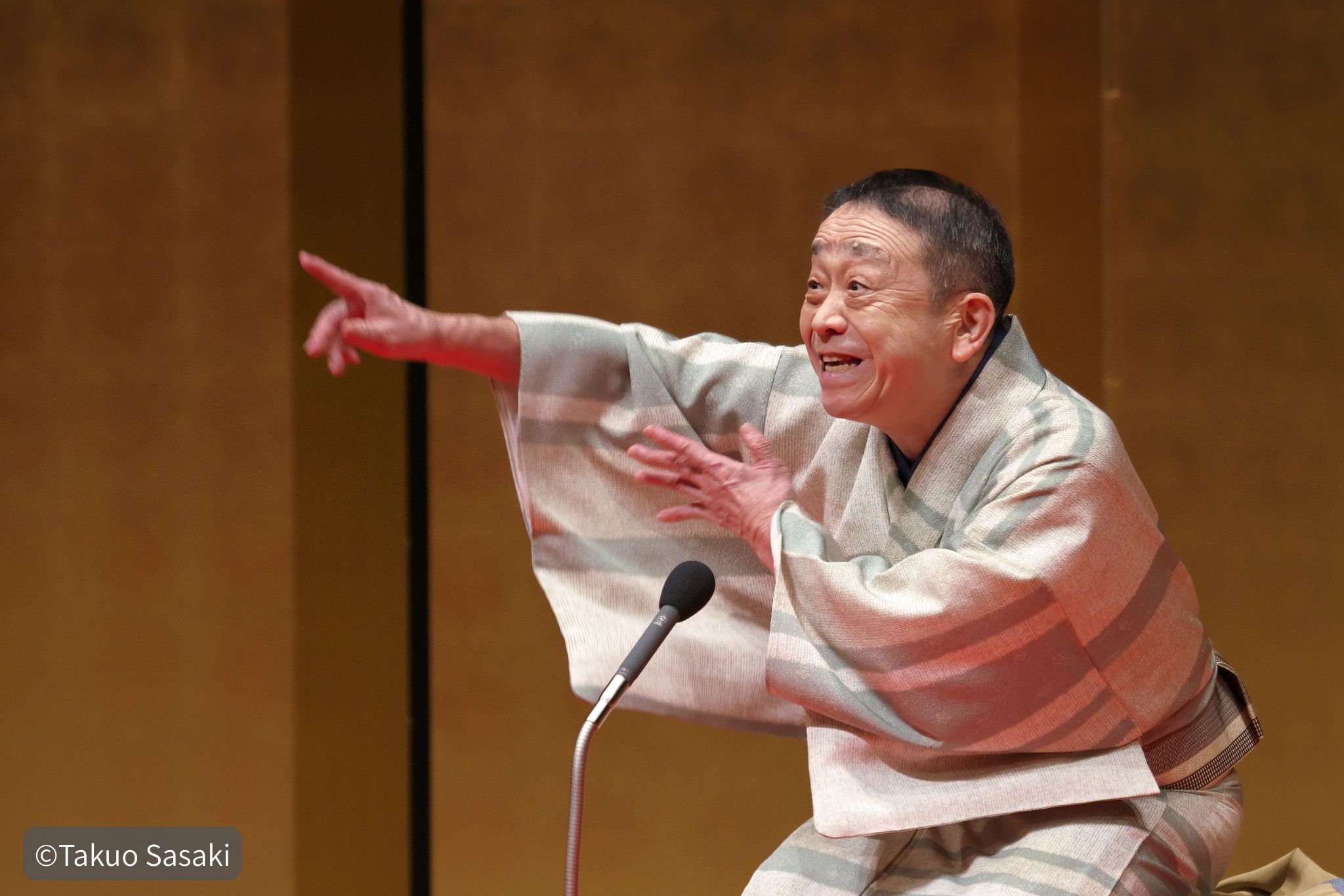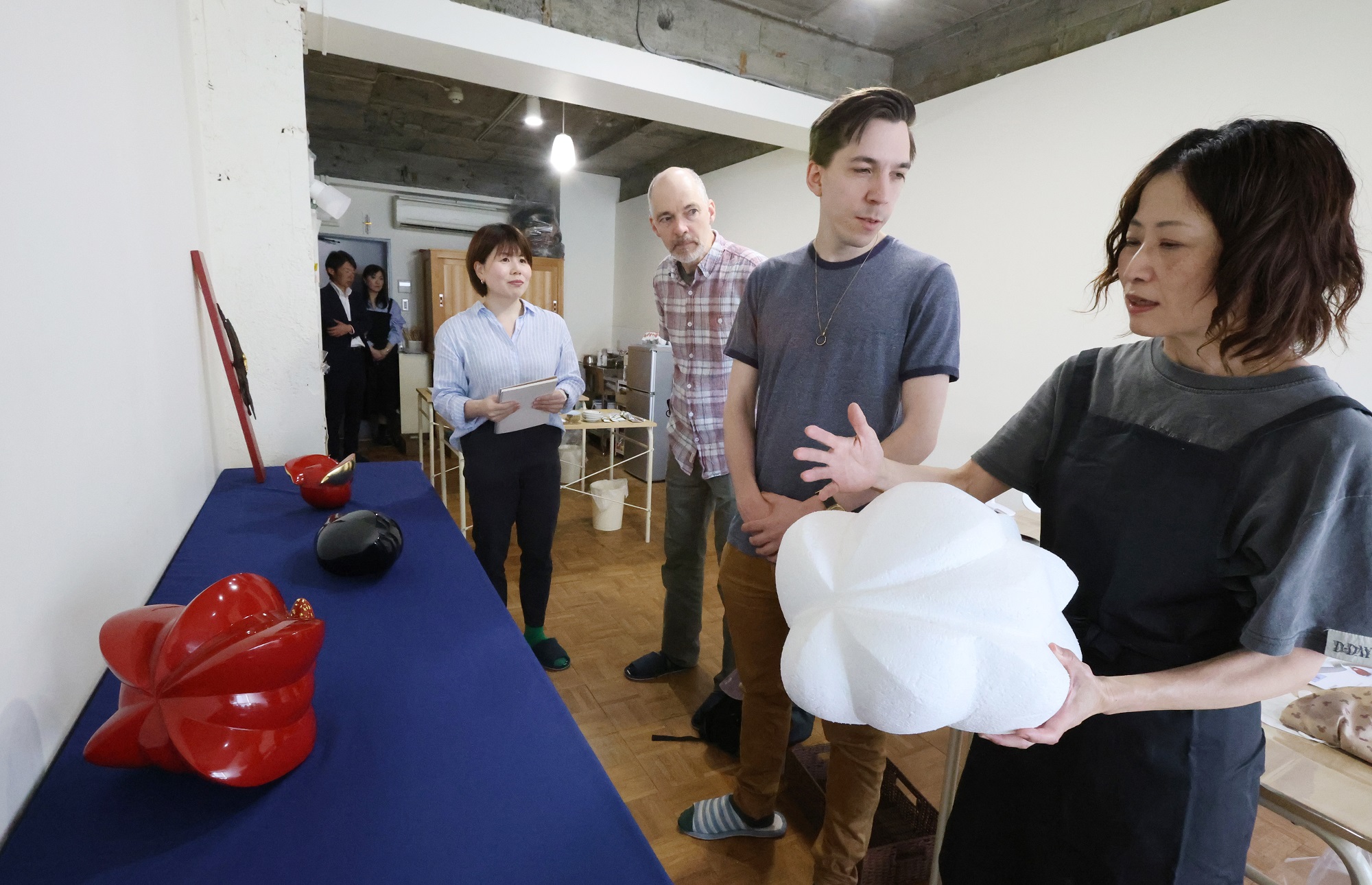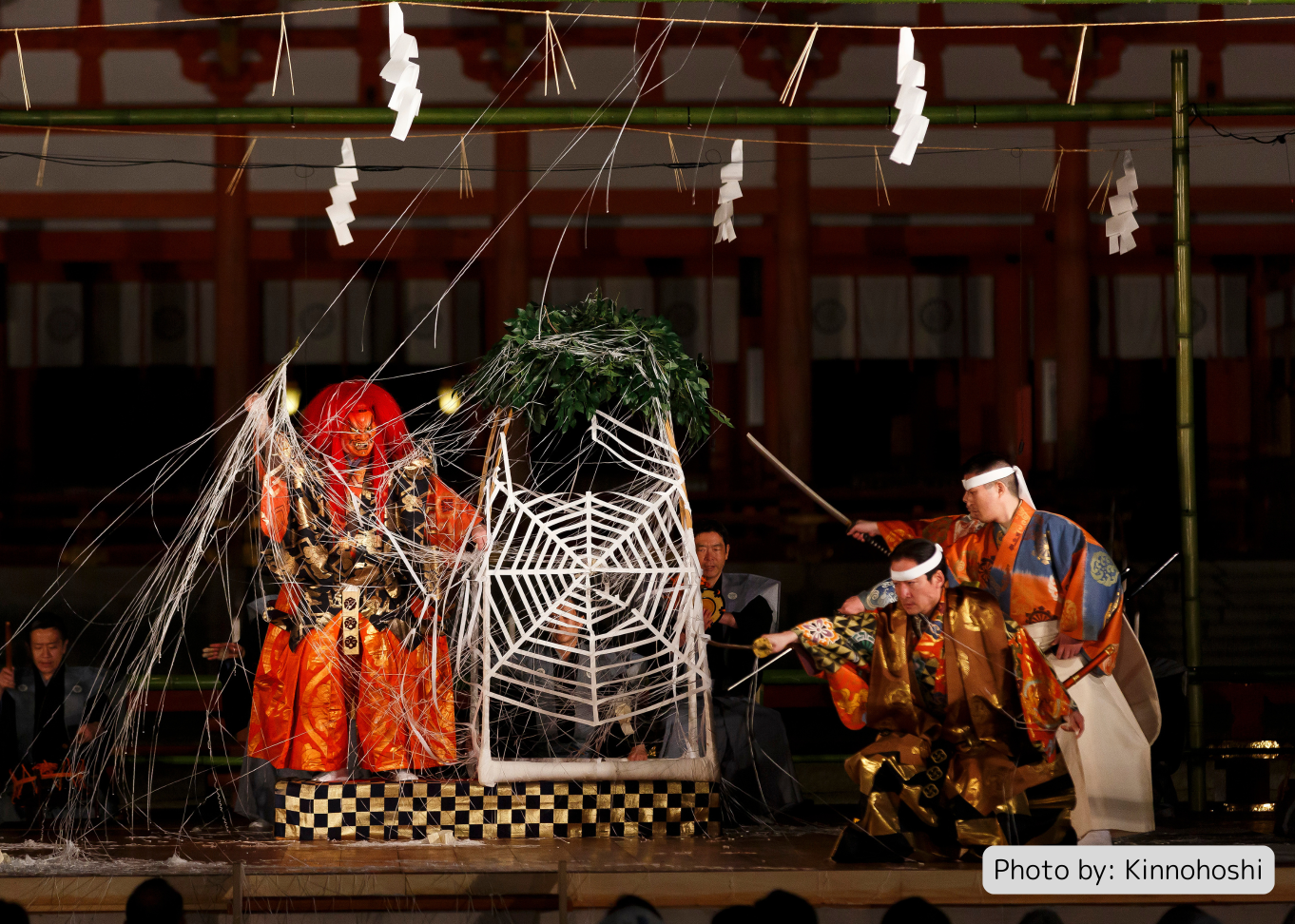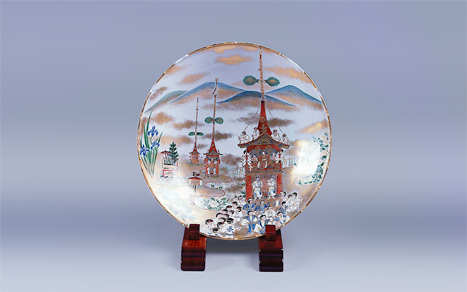
Traditional Industries of Kyoto refers to industries planned and produced primarily within the district of Kyoto City which make products that are closely connected to traditional Japanese culture and lifestyles through the use of traditional techniques and methods.
Kyo-butsudan (Buddhist altars)
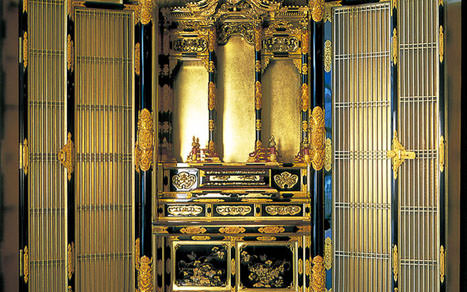
Kyoto boasts the highest quality of Buddhist altars and is where they originated 1100 years ago. Lacquer, gold leaf, silver, copper, brass and other materials are used on a base of pine, cypress, cedar or zelkova wood, and produced through a number of processes. Each process uses traditional techniques that date back to the 10th century.
Kyo-butsugu (Buddhist paraphernalia)
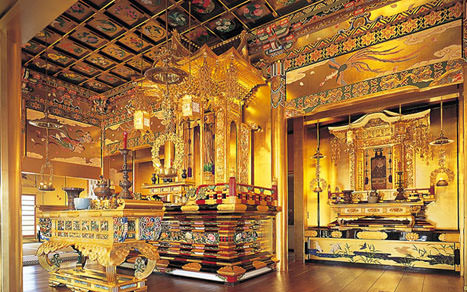
Since the bussho (Buddhist sculpture workshop) was built in Shichijo at the start of the 11th century, Kyoto has been the premier producer of Buddhist paraphernalia in Japan, just as it is with regard to Buddhist altars. There are many types that can be divided by purpose into home-use and temple-use. Carpentry and metalworking are just two of the many techniques used in their production, and they are produced by hand using traditional methods.
Kyo-shikki (Lacquerware)
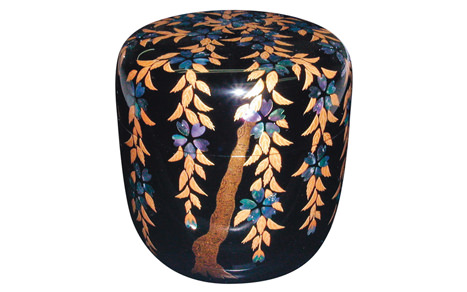
This technology was established in the Nara period, bringing a new and unique aesthetic to lacquerware originally based on techniques by the Tang dynasty of China. There began to be division of labor in the production of lacquerware in the 16th and 17th centuries, master craftsmen like Hon’ami Koetsu appeared, and lacquerware became popular together with the tea ceremony. Cypress, cedar and Japanese horse chestnut woods are used for the base material, and the lacquerware is produced as tableware, furniture and tea ceremony implements.
Kyo-sashimono (Wood crafts)
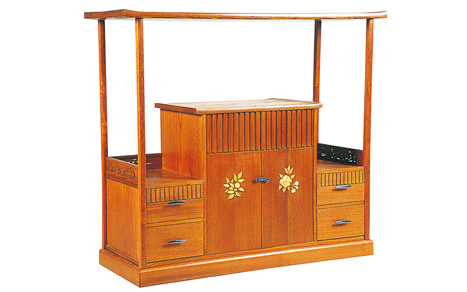
Beginning with the court culture of the Heian period, masters of wood crafts began to appear in a time when the upper classes were greatly enamored with wood craft, in the Muromachi period and onward. Furthermore, the culture of tea ceremony since the advent of Sen no Rikyu greatly affected Kyoto wood crafts. They can be divided into two types: furniture wood crafts and tea ceremony wood crafts, and they are considered to be the peak of quality among luxury furniture and tea ceremony implements.
Kyo-yaki and Kiyomizu-yaki (Ceramics)
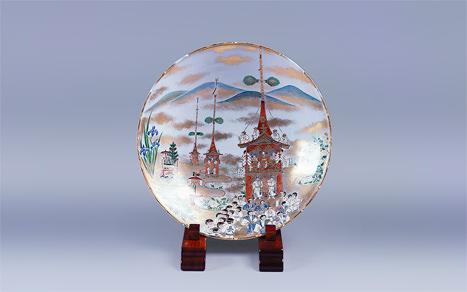
Ceramics were already being produced in the Nara and Heian periods in Kyoto, but Kyoto developed as a ceramic production center in the Azuchi-Momoyama period, and a great deal of pottery was made through the Edo period. Various tableware, implements for tea ceremony and flower arrangement, and ornaments were made, and they are known for the variety of techniques used in their production as well as their gorgeous colors and clean beauty.
Kyo-sensu (Folding fans)
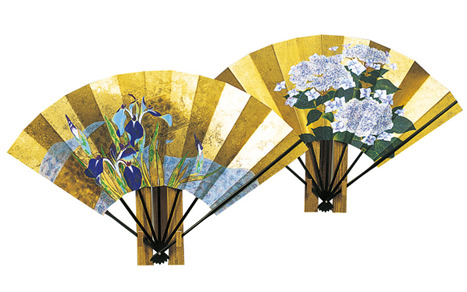
Folding fans were invented around the 9th century in Japan. Paper fans followed wooden fans, and they took root and developed as a luxurious art item in the everyday lives of dynastic society. There are fans for dancing, for Noh theatre, for tea ceremony, for display and for practical use in cooling oneself.
Kyo-uchiwa (Round fans)
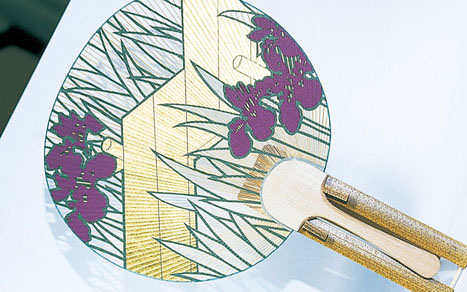
In the Nanboku-cho period, the ribs and the grip of a round fan were made of a single piece of bamboo, and it is said that pirates brought these fans to western Japan. The ribs and handle of Kyoto round fans are made separately in a style called sashie, and they gradually spread to the public after originating as gosho-uchiwa (fans made for the imperial family), which were painted by artists of the Tosaha and Kanoha schools.
Kyoto stone crafts
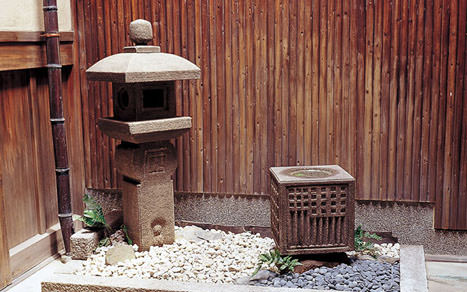
The Kyoto village of Shirakawa-no-Sato has long been known as a town of stone craft artisans, and stone crafts from the village are particularly famous. Man’s connection with stone goes back to the Stone Age, but it was in the 8th century that stone craft developed in Japan through influences from continental culture, and the technology advanced remarkably in the Kamakura period.
Kyo-ningyo (Dolls)
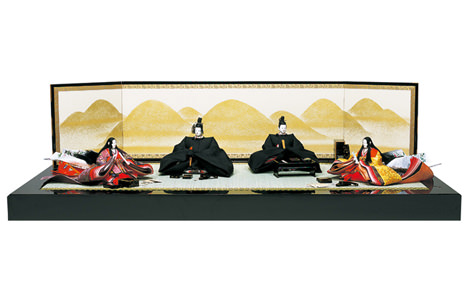
The basic shape is of an amagatsu or hoko child doll. Hina-ningyo dolls began with the hiina asobi (playing house with dolls) game of the Heian period, and then paper hina dolls were invented in the Edo period. In the late Edo period gosho ningyo (dolls of the imperial family) were made which were treasured presents offered from the imperial court to feudal lords. Today, Kyoto dolls include hina-ningyo, gogatsu-ningyo, ukiyo-ningyo, fuzoku-ningyo, gosho-ningyo, ichimatsu-ningyo and more.
Kyo-hyogu (Mounting)
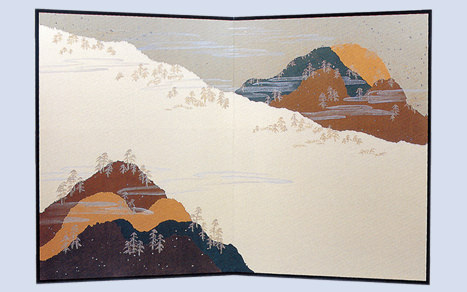
Hyogu refers to hanging scrolls and screens, and they are closely connected to Japanese architecture. Their techniques came to Japan together with Buddhism, and kakejiku hanging scrolls in particular improved with the passage of time until the techniques of their production were mastered in the Muromachi period.
Kyo-toningyo (Ceramic dolls)
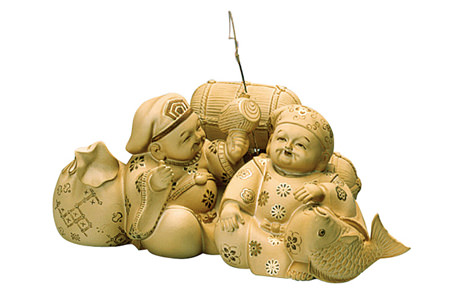
These dolls find their origins in the Fushimi-ningyo dolls that have been sold and loved by many people for a long time in the Fushimi Inari area of Kyoto. Kyoto-ningyo added a new feeling and artistic creativity to these dolls, and many of them focus on the beauty of the clay and uniquely Kyoto designs.
Kyoto metal crafts
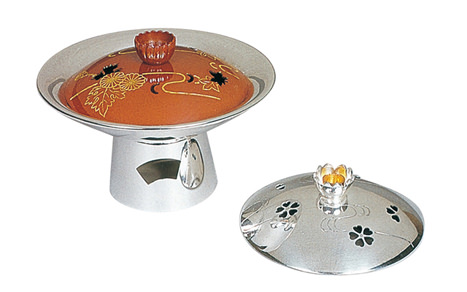
These crafts are made by doing surface finishing on bases of gold, silver, copper, iron, tin, brass and other metals though techniques which include punching, casting, and engraving. They are used in the tea ceremony and flower arrangement, as religious items, as house decorations, and as items to be worn, and they are handcrafted using traditional techniques.
Kyo-zogan(Inlays)
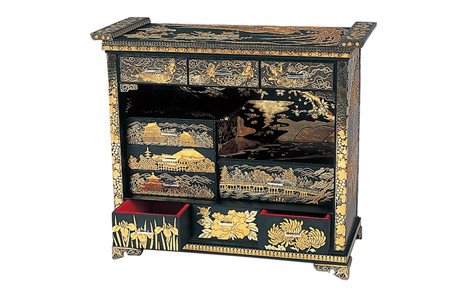
Kyo-zogan came to Japan in the Kofun period and developed as ornamentation for swords and armor. There are two types of zogan inlays, horikomi-zogan and nunome-zogan, of which Kyo-zogan are primarily the latter. In this type, which is used to make accessories and other items, texture is cut into the surface of an iron plate and metals like gold and silver are pounded into the texture to form a design.
Kyo-shippo (Cloisonne)
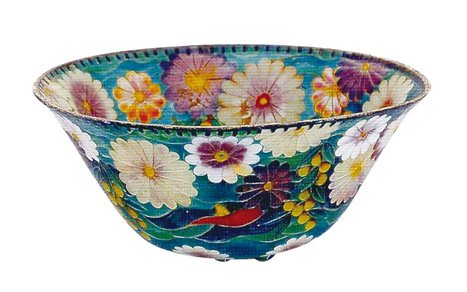
Glass enamel is placed over metal and fired at 750 degrees. The main technique used involves drawing patterns with a silver wire before firing the enamel. It was used for nail covers, pulls, stationery and other things in the Azuchi-Momoyama period, and the technology was praised across the world after further improvements were made in the Meiji period. These days it is used in vases, picture frames and accessories.
Kyo-hamono (Cutting tools)
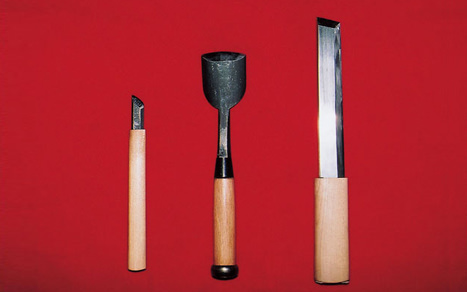
The history of Kyoto cutting tools goes back to skilled blacksmiths coming to the area when the imperial capital was moved to Heian-kyo. Many skilled blacksmiths came after and built up a tradition of Kyoto cutting tools that still exists today. Currently, chisels, sickles and knives are made, and these tools play an important role in the making of other traditional items like Nishijin-ori weaving, Kyo-yaki and Kiyomizu-yaki pottery, etc.
Kyoto ceremonial crafts and furnishings
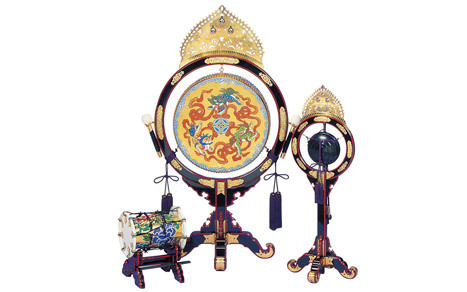
Ceremonial furnishings for shrines and clothing worn by Shinto priests. The origins go back to the moving of the imperial capital to Heian-kyo, and it crosses the fields of woodworking, lacquering, metalworking, dying and weaving. For this reason, these crafts have played a significant role in the technological development of Kyoto traditional industries in a similar fashion to tea ceremony and flower arrangement implements and Buddhist paraphernalia.
Kyo-meichiku (Kyoto bamboo)
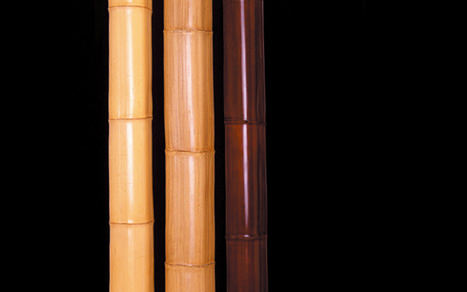
Since the Heian period, bamboo has been used in building materials like pillars, wall backing and blinds, and in Kyoto it has played an important role in architectural culture in the gates and fences of gardens and machiya town houses. White bamboo is used in construction, tea ceremony and flower arrangement and in artistic crafts, black bamboo is used for construction, folding fans, etc., square patterned bamboo is used in ornamental pillars and furniture, and tortoise-shell bamboo is used for unusual architectural ornamentation and in crafts.
Kyoto Shikishi, Tanzaku and Waboncho paper
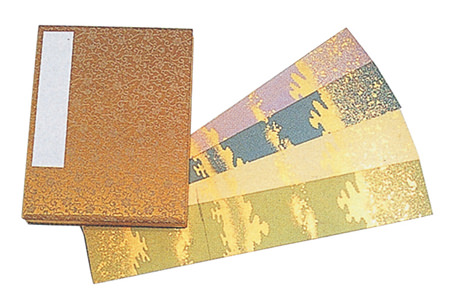
In the Kamakura period, kaishi paper that had been used for poetry anthologies in the Heian period evolved into the shikishi and tanzaku paper that is still used today. Originally they were made by the daikyoji (master of scrolls and Buddhist drawings) within the imperial court, but in the present day they are mostly produced within Kyoto using the same techniques.
Kitayama-maruta (Cedar logs)
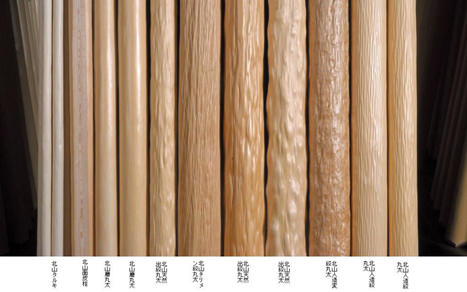
Kitayama cedar is produced in the northern part of Kyoto City. Polished Kitayama cedar logs were used in the construction of tea room interiors in the Muromachi period, and today they remain the ultimate material for Japanese architecture to use in pillars and indoor supports. They are grown into their beautiful form by repeatedly removing branches from their sapling stage until they can be harvested as logs, in a process that takes 40 years to complete.
Kyo-hanga (Woodblock prints)
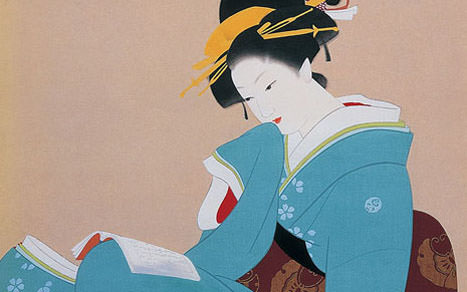
The sutras of Horyu-ji temple are the oldest woodblock prints in Japan. However, woodblock prints were generally used only for Buddhist materials until the beginning of the 17th century. In Kyoto, woodblock prints came to be used for pictures in storybooks and for ukiyo-e, and in the Meiji period they further developed as they came to be used for design collections, which allowed for no error in color or alignment of the print.
Kyo-tatami (Tatami mats)
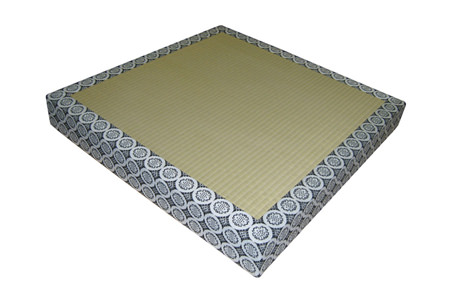
These mats are mentioned in the Kojiki chronicles of the Nara period, and they have a history of 1300 years. In the Heian period, the nobility used them to symbolize power, but they eventually spread to the populace, following a number of changes that came with the spread of the tea ceremony. There are general-use mats for private houses and tea rooms as well as special mats used in shrines and temples, and most of the latter type are produced in Kyoto.
Kyo-insho (Seals)
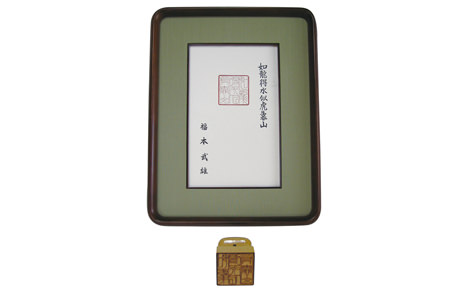
Production of imperial and official seals began in Kyoto when Kyoto became the capital of Japan as Heian-kyo. A notable feature of these seals is that they have taken the style of the copper seals used during the Han dynasty of China, and many of these seals leave a powerful and expressive mark using a style that draws from this history. The imperial seal and official seal of Japan in the present day were made by a seal engraver in Kyoto, and the previous maker of the seals was also a Kyoto seal engraver.
Kyo-sudare (Bamboo blinds)
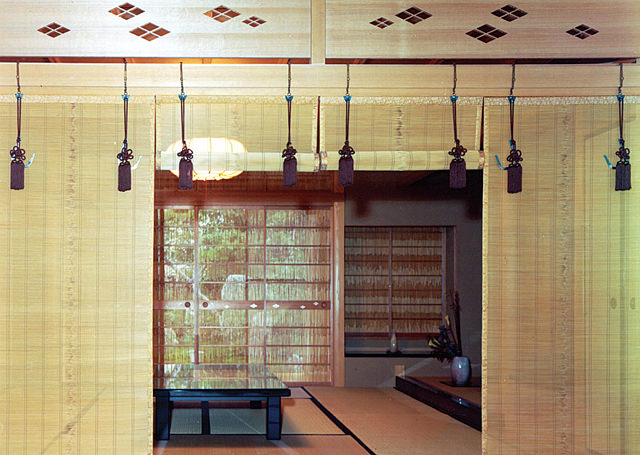
These blinds trace their history back to the misu blinds of the Heian period. Zashiki-sudare were developed in the Meiji period, and they came to be a must-have item for day-to-day life along with sotogake-sudare which were hung outside of a window to block light. In the present day with modern air conditioning, Kyo-sudare have come to be a perfect piece of interior decoration to express a Japanese feeling in a room.
Kyo-fukurumono (Bags)
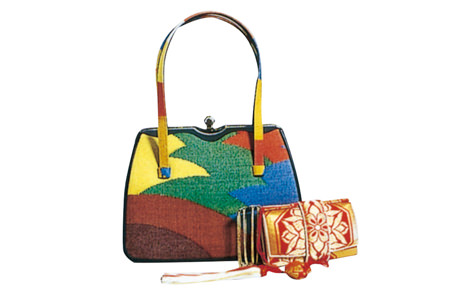
These bags were popular as souvenirs among people who came to Kyoto in the Edo period, when people began moving around Japan in greater numbers. There are many types, from paper holding bags to furoshiki wrapping cloths to handbags and cigarette holders, made with Nishijin-ori weaving or Kyo-zome dyeing techniques, and many with fine metal ornamentation. The traditional techniques used in their production have been passed down to the present day.
Craft sweets
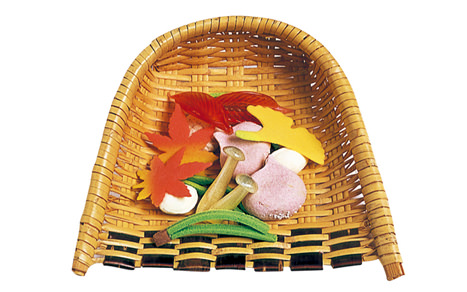
Sweets for offering to shrines and temples, sweets for imperial events, ceremonies and banquets, and tea ceremony sweets which came with the development of tea ceremony culture are all Kyoto sweets known for the traditional techniques by which they are made and the fine sensibilities they represent. These elegant sweets, made with advanced techniques, are artistic crafts that incorporate the beauty of nature.
Juzu (Buddhist beads)
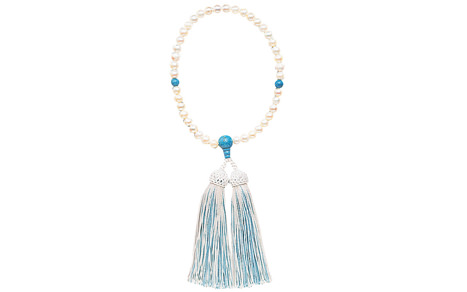
Juzu beads and nenju prayer beads came to Japan and developed together with Buddhism, and prayer beads unique to Japan came to be made subsequently and are still made to this day. Juzu beads are a necessary item in the Buddhist world, and there are traditional rules regarding their shape and the number of beads in a set that depend on the sect and whether the user is a priest or a layperson.
Zoen (Gardens)
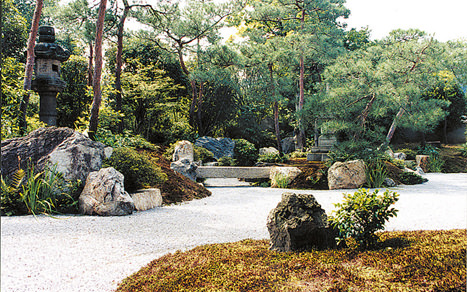
Stone, trees, grass, sand, moss… all of the elements of nature come together in the space of a garden with a meaning and a promise. This is the Japanese garden. The process of creating a miniature cosmos backed by Japanese aesthetics and incorporating natural materials can be called a type of hand-worked space design.
Traditional architecture
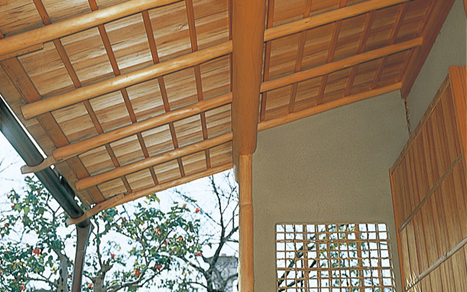
As the capital of Japan for 1000 years, there was plenty of time for the techniques of building palaces, temples, castles, private residences and tea houses to advance to a high level in Kyoto, and foreign technologies were also brought in and made Japanese. The traditional carpentry techniques used in miya-style temple and shrine construction, machiya-style town house construction and sukiya-style tea house construction are representative cultural heritage of Japan.
